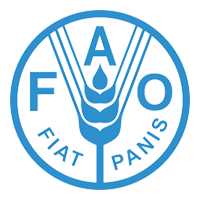Multiple water use as an approach for increased basin productivity and improved adaptation: a case study from Bangladesh
This study, supported by the Challenge ProgramWater and Food (CPWF-Project 35), demonstrates the case of multiple-use of water through seasonal aquaculture interventions for improved rice–fish production systems in the Bangladesh floodplains. The project focused on community-based fish culture initiatives, increasingly adopted in the agro-ecological zones of the major floodplains of the Padma, Testa, and Brahmaputra basin. The productivity of water and fish is used as an indicator to explain this case.We hypothesize that seasonal aquaculture supported by the management of floodplains for multiple-use of water can significantly increase the productivity of rice–fish systems. Recognizing the need for innovative ways to manage human-dominated landscapes and climate-sensitive ecosystems such as floodplains, we have analysed seasonal aquaculture interventions along with local adaptation of water management strategies, including the consideration of groundwater mechanisms. The results, supported by quantitative analysis and qualitative arguments, demonstrate the significant contribution of seasonal aquaculture in improving the rice–fish production systems of the selected floodplain sites. This was achieved through the increased productivity of water and fish and the reduction of the risk posed by arsenic contamination. The study is also illustrative of the diversification in livelihood-generating activities to cope with the extended period of flooding cycle in the region. We highlight the value of multiple resource-use approaches to enhance the social and ecological resilience of floodplains, and the need to re-consider basin water management options to recognize the water requirements of other sources of food such as fish produced by capture fisheries and aquaculture.
Related Resources
Contribution of Farmer-to-Farmer Video to Capital Assets Building: Evidence from Bangladesh
This study reports on the contribution of farmer– to-farmer video-mediated group learning to capital assets building of women in resource-poor households. Data were collected using structured interviews with 140 randomly selected women in 28 video villages and 40 women in...
Postharvest innovation in developing societies: The institutional dimensions of technological change
This review aims to introduce the institutional and policy oriented literature on technological innovation into the context of postharvest engineering. The focus is how rigorous quality and food safety standards in cross-border agricultural and horticultural trade influence technological change up...
Making innovation systems work in practice : experiences in integrating innovation , social learning and knowledge in innovation platforms
This article presents a different dimension of the innovation systems approach, going beyond analysis and shedding light on how these processes can be facilitated in practice. This is based on 20 years' experience with innovations systems. The focus is on...
Building Capabilities for Multi-Stakeholder Interactions at Global and Local Levels
Discussion of the processes that led Unilever to develop and implement a corporate sustainability strategy working with multiple stakeholders.Major learning points include: 1) interactions with stakeholders are crucial to secure strategic resources in developing countries; 2) developing multi-stakeholder platforms must...



